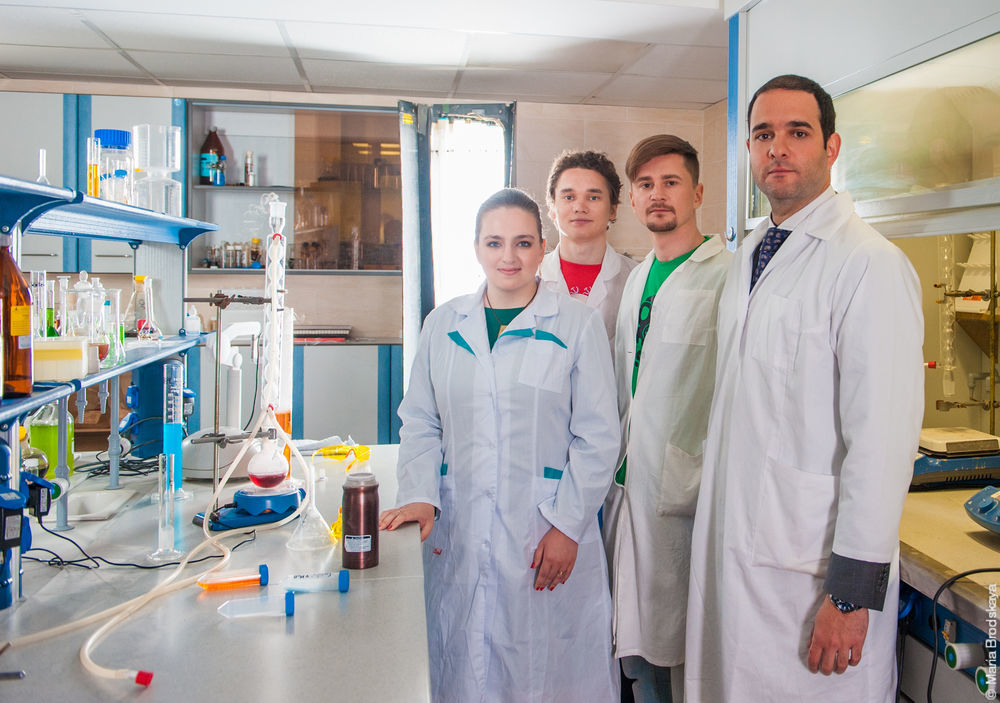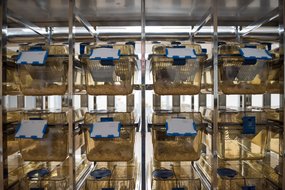A group of scientists from NUST MISIS, Lomonosov Moscow State University, and the Medical Nanotechnology Company led by Dr. Alexander Majouga have started preclinical trials of Russia`s first technology for oncological therapy on the basis of iron oxide nanomedicines, combining the capabilities of hyperthermia and chemical therapy.
“Upon successful completion of preclinical trials, starting in 2020 we are planning to begin clinical trials of the first domestic method of imaging and therapy for breast tumors. The developed technology is universal, and can later be used for the treatment of other types of cancer. Our idea lies in the strong effect obtained from a combination of two methods of cancer treatment — hyperthermia (heating) of diseased tissue with the use of nanoparticle agents in a high-frequency magnetic field, and chemical therapy”, said Dr. Alexander Majouga.
Since 2014, the group of Russian scientists from NUST MISIS, Lomonosov Moscow State University, and Pirogov Russian National Research Medical University have been developing diagnostic nanomedicines for cancer detection.
For the first time, Russian scientists managed to create stable magnetic nanoparticles with an average size of 15 nanometers, coated with biopolymer. The unique shape of the created particles is a sound cube. Most research groups use spherical nanoparticles, and in this case the shape matters. The vector of the degree of magnetization clearly changes in a magnetic field, not rotating like in a “ball”-particle, thus generating more heat. Accordingly, by inputting the medication into the affected tissue with the help of a high-frequency radiation generator, it is possible to create a temperature of up to
Another aspect of therapy with iron oxide nanoparticles is based on the phenomenon of ferroptosis — cell death from an excessive level of iron. Iron oxide Fe3O4 in physiological conditions may cause the appearance of active forms of oxygen, deleterious to tumor cells.
Magnetite nanoparticles are clearly visible on MRI images, giving doctors the ability to detect tumors at early stages. Additionally, magnetite is non-toxic for the body, unlike other existing agents. Magnetite is also much cheaper than other contrast agents. On top of all of that, this technology can also be used for the targeted transport of medication to tumor cells.
According to Professor Majouga, "The known problem of oncotherapy is the resistance of tumors to external influences, including chemical therapy, so that’s why we referred to the technology by definition to not cause resistance. Currently, we are working with equipment specially designed for us by our colleagues from Tambov State University, named after Derzhavin. The generator [we have] is able to create high-frequency magnetic fields with a frequency up to 300 KHz. We have developed a combined technology that has no analogues in the world, which makes cancer sensitive and more vulnerable to chemical medications.
Magnetite is locally injected into the affected organ and placed in a high-frequency magnetic field that causes the nanoparticles to generate heat and “burn” a large part of the tumor. The next stage is chemical therapy, which has an increased effect due to the weakening of the tumor.
Preclinical trials of the technology started earlier this summer.






